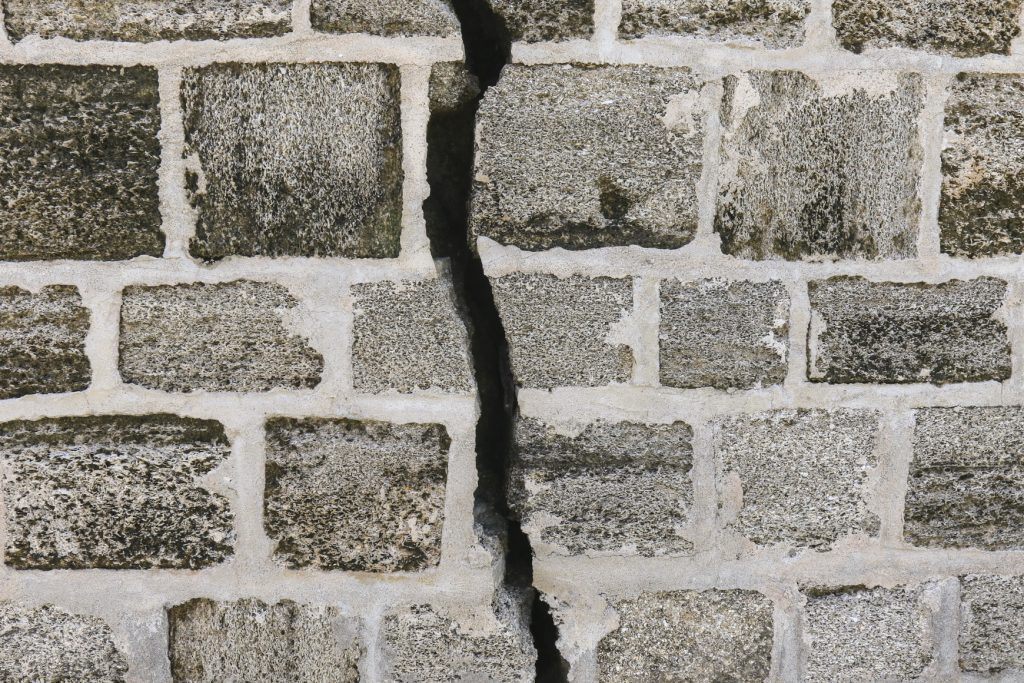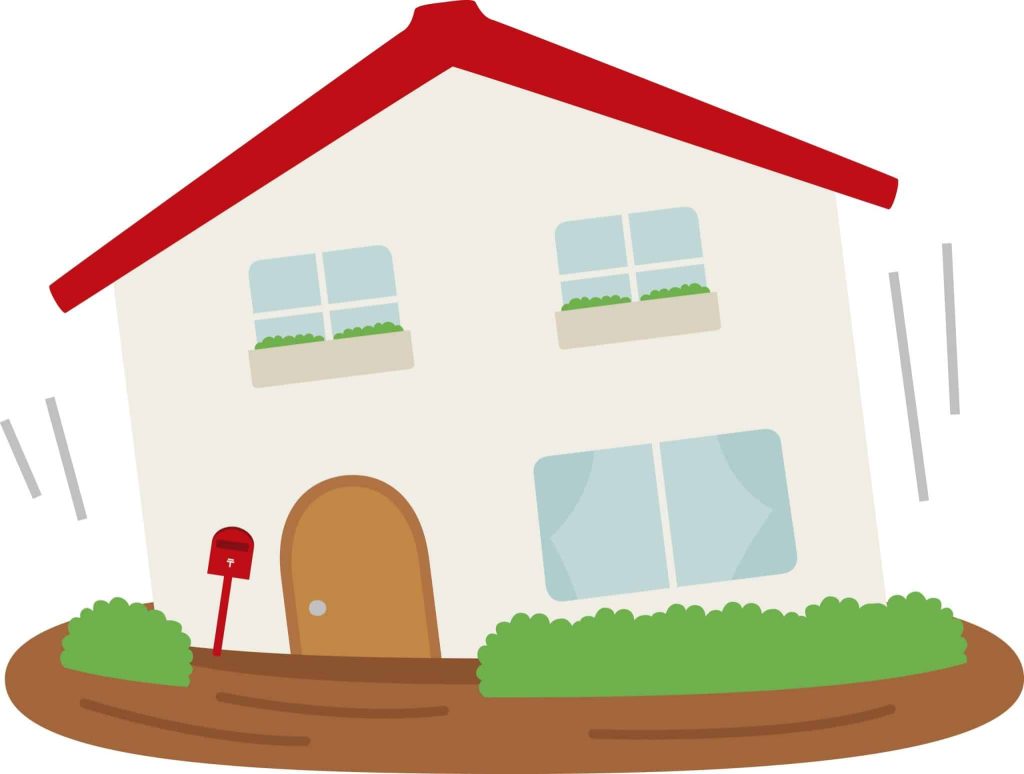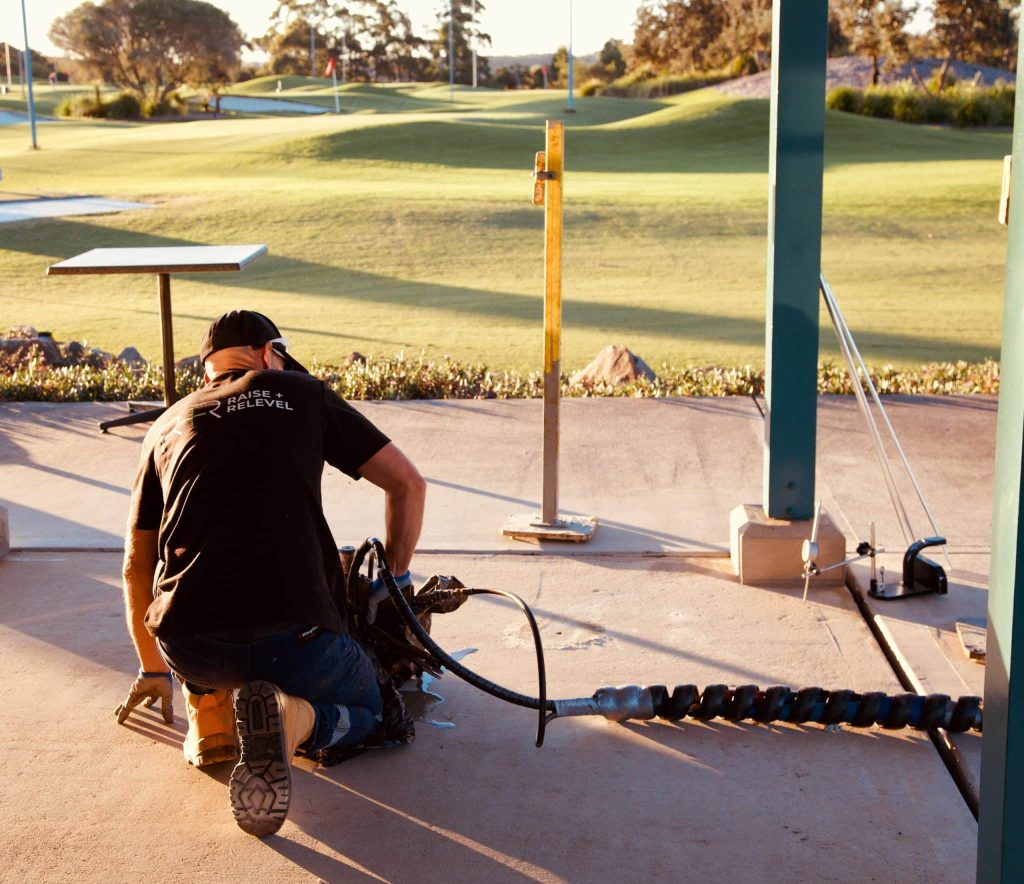testWhy do cracks appear? While wall cracks can signify more significant structural damage, they can also be superficial and unsightly. It’s best to get to the root of the issue before filling the cracks.
The sooner you fix the cracking in your walls, the safer the structural integrity of your home is. This guide will share why cracked walls appear, the building materials needed, and repair costs.
Why do walls crack?
Why has your wall cracked? Whether you flag it on building inspections on your prospective new home or appear in structural reports, you want to see it as soon as possible.
While serious structural problems cause cracks, not every crack indicates disaster. Some are purely cosmetic. So, how can you find out what causes cracks in your home?
Consult a specialist ground engineering contractor or structural engineer if you’re concerned about the severity of cracks in walls. Remember, never underestimate a crack in the wall.
Small hairline cracks in plaster walls, for example, are typically caused by seasonal changes. As the weather warms and cools, wooden framing can contract and expand. These are straightforward to patch up.
More severe cracks might indicate settlement and subsidence. When builders construct a house, its foundations disrupt the soil. Depending on the soil type, the soil compacts and settles over time — months or even years after.
Minor settling is normal. However, significant subsidence might cause more dramatic and dangerous cracks in concrete walls. One example is a water leak, washing the soil away entirely. A sagging ceiling, uneven floor, or sticking doors are warning signs.
What are the different types of wall cracks?
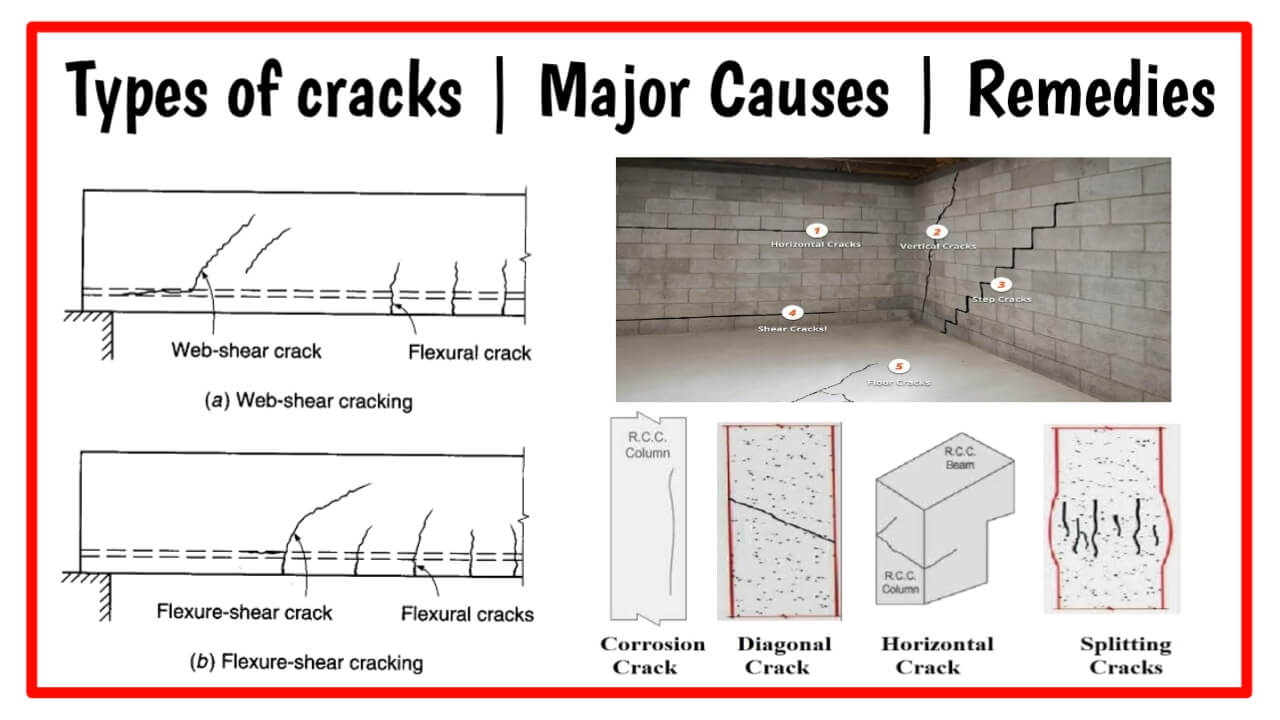 Image credit: Civil Engineering Web
Image credit: Civil Engineering Web
You need to know the severity and types of cracks before fixing cracked walls.
- Negligible: Hairline cracks less than 1mm in the plaster are easy to fix. Fill the crack with filler. External walls might need repointing.
- Slight: between 1 – 5mm in width. Consult a specialist ground engineering contractor
- Moderate: 5 – 15mm cracks, requires professional wall crack repair. Consult a specialist ground engineering contractor or structural/remedial engineer
- Severe: Around 25mm wide, are likely to signify severe foundation damage.
- Horizontal crack: Minor cracking is fine. However, larger cracks could be a serious concern. It might mean various things for different types of foundations.
It would be best if you also considered where the crack is. For example, if a wall in your basement cracked, it requires extra care for an internal wall on the second floor.
How to fix a cracked wall?
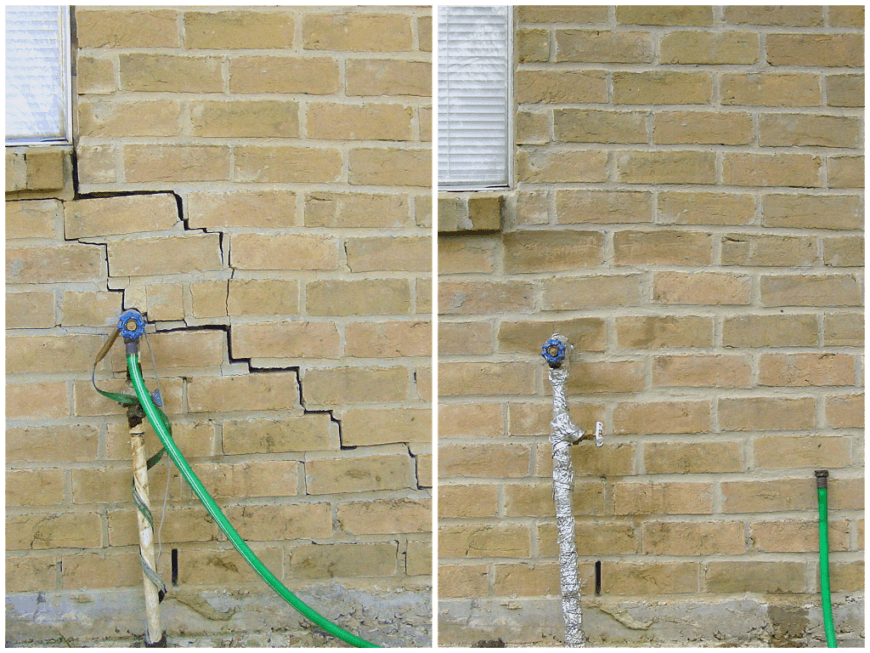 Image credit: Brick Restoration
Image credit: Brick Restoration
After you have established what type of crack you have and whether you will need more extensive foundation repairs, the next thing to do is fix the cracked wall.
Foundation repair costs are between a couple of thousand dollars to $35,000. Similarly, water damage is more comprehensive and could require professional help.
However, if you want to repair your cracks yourself, you can. Find out your local contractor rates for an accurate quote of the cost to repair your cracks.
Here are some tools and materials that you’ll need:
- Utility knife.
- Putty knife.
- Plaster compound.
- Sanding block.
- Dust mask.
- Safety glasses.
- Paint scraper.
- Jointing tape.
How to fill external wall cracks?
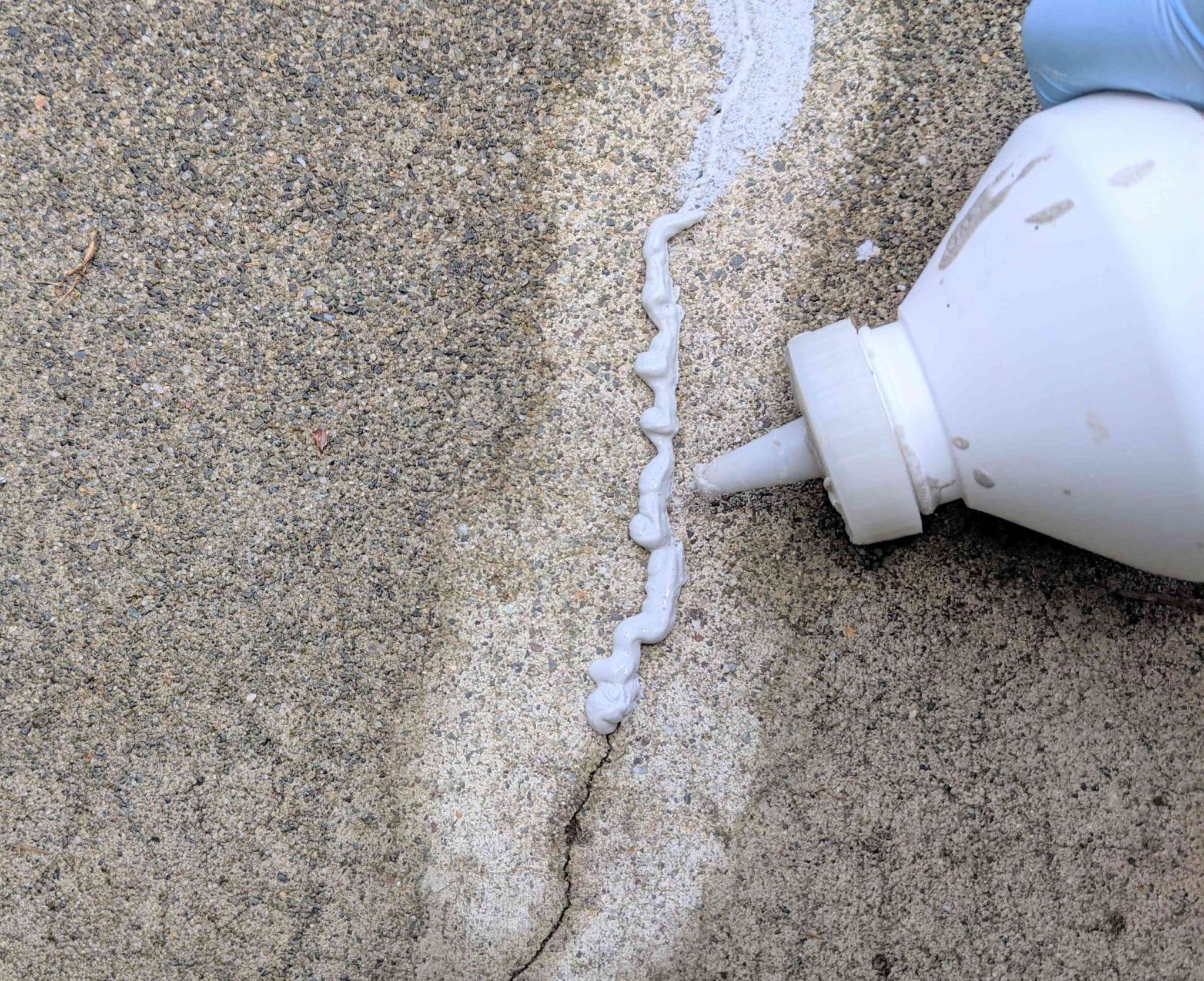 Image credit: The Spruce
Image credit: The Spruce
To fix cracks in walls on the outside of your house, you’ll need concrete epoxy or filler compound. Ensure the break in the external house walls is completely clean of debris. Next, using injection ports, repair cracks in walls with a thin layer of epoxy.
You might want to use a filler joint compound for more significant gaps in your block wall. You can use epoxy on concrete blocks, wooden wall repair, or fill a drywall crack. Allow drying before painting.
How to fix cracks in plaster walls?
Fixing cracks in a plaster wall is relatively straightforward:
- Use your putty knife to scrape the plaster around the gap and open it up.
- Cover the crack with jointing tape.
- Rub a layer of joint compound over the coat of plaster. Lightly sand and clean the area.
Once dry completely, sand it down until you have smooth walls.
How to repair hairline cracks in a plaster wall?
A hairline crack in your wall’s plaster is nothing to worry about. Now that you know how to repair cracks in plaster, you can fix hairline cracks the same way.
Remember, you can paint over the hairline crack to repair plaster walls. However, this is only a temporary solution. Long term solutions to fixing wall hairline cracks might require jointing tape and filler compound.
How to fix cracks in brick walls?
Cracks in your brick wall usually result from internal or external stress. While you can repair wall cracks as part of your home maintenance, you might want to hire a professional if you’re concerned about broader damage.
Firstly, you need to assess the type of crack: passive or active. If you have determined that it’s passive, fixing wall cracks is straightforward. Passive breaks do not grow, whereas active cracks might spread to the rest of the wall.
To repair wall cracks, chip away the loose brick pieces. If any are big enough to glue back on, keep them. Then chisel out the cracked mortar. Clean the dust and dirt away from the area. Finally, mix the mortar into a runny paste. Apply to the wall cracks.
How to fix cracked gyprock walls?
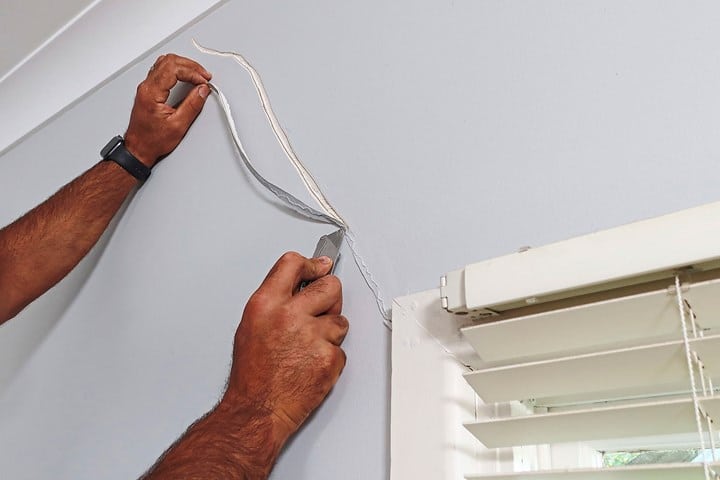 Image credit: Better Homes and Gardens
Image credit: Better Homes and Gardens
Gyprock wall cracks — also known as drywall cracks — are unsightly. Drywall mud is used in both internal features and as a retaining wall.
The process is much the same as fixing plaster walls. Scrape away the paint, apply compound, and once the mixture dries, paint over the crack. You can use the same method to fix holes in drywall.
How to fix wall corner cracks?
If you find corner cracks in your home inspections, it’s not necessarily a sign of more significant damage. If you plan to do the job yourself, ensure you clean the area properly as part of the site preparation. Then, apply your filler and sand down the crack.
Cracked Walls aren’t necessarily something to panic over. Ensure that you assess the situation. Is it a sign of structural damage? Make sure you seek a professional to deal with larger cracks before it’s too late. Apply plaster filler and paint over the area for small hairline cracks to make your wall look as good as new.
Need a hand with fixing an unlevel home or building?
If you have an unlevel house or building, you will most likely need what is traditionally referred to as house underpinning.
Raise and Relevel specialises in a modern form of traditional concrete underpinning and can provide the quickest, safest, cleanest and most effective underpinning.
If your house is sinking and has cracks in the walls, it is essential to fix it right away to avoid the risk of further damage and potential safety hazards.
Contact Raise and Relevel to have one of our ground surgeons provide you with polyurethane resin injection underpinning cost advice.

